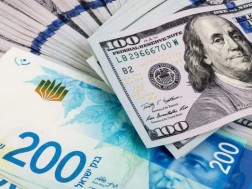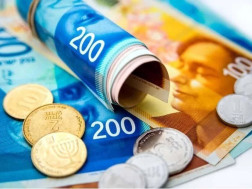During the course of the fourth quarter, Israeli shekel strengthened by approximately 6.6 percent against the U.S. dollar, further to the long-term trend. In parallel, the shekel strengthened by about 2.0 percent against the euro.
Against the currencies of Israel's main trading partners, in terms of the nominal effective exchange rate of the shekel (i.e., the trade-weighted average shekel exchange rate against those currencies), the shekel strengthened by approximately 3.4 percent, further to the long-term trend, reads the recent report of the Bank of Israel.
The dollar weakened in the fourth quarter against major currencies—including the euro (4.6 percent), the British pound (6.2 percent), and the Japanese yen (2.5 percent), further to its weakening against those currencies in the previous quarter.
The standard deviation of changes in the shekel/dollar exchange rate, which represents its actual volatility, declined to an average level of 4.6 percent during the fourth quarter of 2020, further to the decline in the previous quarter.
The average implied volatility in over the counter shekel/dollar options, an indication of expected exchange rate volatility, increased slightly during the quarter, to an average level of 6.3 percent.
The implied volatility in foreign exchange options in emerging markets during the quarter was 10.8 percent. The average level of implied volatility in developed markets during the quarter was 7.7 percent, a decline of 0.5 percentage points compared with the previous quarter.
An estimate of the activity of the main segments in the foreign exchange market indicates that during the course of the fourth quarter of 2020, most segments continued with the trends of the third quarter. Institutional investors (pension funds, provident funds, and insurance companies) had net sales of foreign exchange totaling about US$5.2 billion and nonresidents increased net foreign exchange sales to about US$6.2 billion. In contrast, the business sector continued its net purchases of foreign currency, totaling about US$1.8 billion.
The average daily trading volume declined by about 14 percent during the quarter, to about US$6.8 billion, with the decline derived mainly from a decrease in daily trading volume in swaps.
Nonresidents' share of total trading volume (spot and forward transactions, options and swaps) decreased by about 2.2 percentage points to about 41.0 percent at the end of the fourth quarter.















